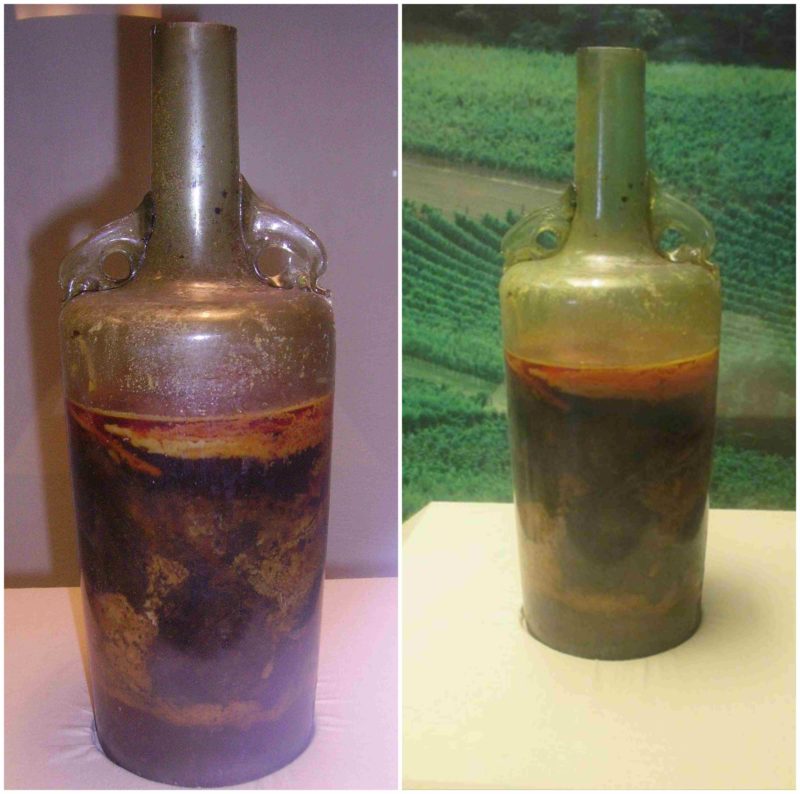The origin of man’s romance with wine apparently predates written records, hence no one is really sure as to when humans started getting drunk.
Archaeology may be unaware of the precise date of the time humans first started cultivating grapevines, but the hypothesis is that early humans may have climbed on the trees to pick berries and possibly loved the sugary flavor and decided to store them for longer lasting pleasure.
However, over time the fermentation would have set in at the bottom of the container, producing a liquid that was far more tasty and pleasurable than the berries they were eating.
This theory of the origin of alcohol suggests that the real revolution in the fermentation of alcohol came about around 10,000 to 8,000 BC, when humans effectively made a shift from nomadic to a more sedentary style of living, giving more preference to agriculture which lead to the production of wine.
According to the archaeological records, the earliest available record of wine production is found to be in various sites in Georgia where the production was rampant in 6,000 BC, in Iran around 7,000 BC, and in Greece and Armenia around 4,500BC and 4,100 BC respectively.

It is no secret that the respect given to a bottle of wine precisely depends on its age; therefore, the older the bottle, the better taste it would generate.
But of course, there is a limit to the ‘old age’ of the bottle and a bottle found in a Roman tomb near the Speyer region of Germany certainly breaks all known records of the oldest wine available on the planet; the bottle is appropriately named as The Speyer Wine Bottle.
The Speyer Wine Bottle was first discovered in a Roman tomb in Germany, and is likely to contain a fair amount of wine, and was found in 1867 from the Rhineland-Palatine region of Germany, which is the oldest settlement in the region.
The artifact has since attracted the attention of historians and researchers and has attained the status of the world’s oldest existing bottle of wine.
The wine bottle dates back to between 325 and 359 AD, and was discovered during an excavation at a 4th-century tomb of a Roman nobleman. It is the oldest known wine bottle which remains unopened.
The Speyer Wine Bottle is housed in the Historical Museum of the Palatinate in Speyer and is always displayed at the same location in the Tower Room.
The bottle itself is of 1.5-liter volume and is a glass vessel with amphora-like sturdy shoulders, which are yellowish green in color with handles shaped in the form of dolphins.
The nature of the wine in the bottle is also the subject of many speculations, and it has been suggested the most of the ethanol content of the wine has been lost, analyses have suggested that not all but at least some part of the liquid in the bottle has to be wine. According to the historians, the wine which was produced in the region around the time was diluted with a mixture of various herbs.

The wine bottles were adequately preserved using a thick mixture of olive oil, which was used along with a thick wax seal to close the bottle, effectively protecting it from outside influence.
Scientists have long tried to get permission to fully analyze the contents of the bottle by opening it, but as of 2011 the bottle remains unopened. Thus any detailed analysis isn’t possible at the moment.
This is partly due to the concerns that the interaction of the liquid with the outside environment could potentially damage the content, rendering it useless for anyone.
The tomb that produced the wine bottle also contained two sarcophagi; one holding the body of a woman and one a man.
There are a number of stories regarding the nature of the nobleman, one theory suggests that the man was a Roman Legionnaire and the wine bottle was one of his provisions for his ‘celestial’ journey, as it was the custom around the time he must have been buried.
